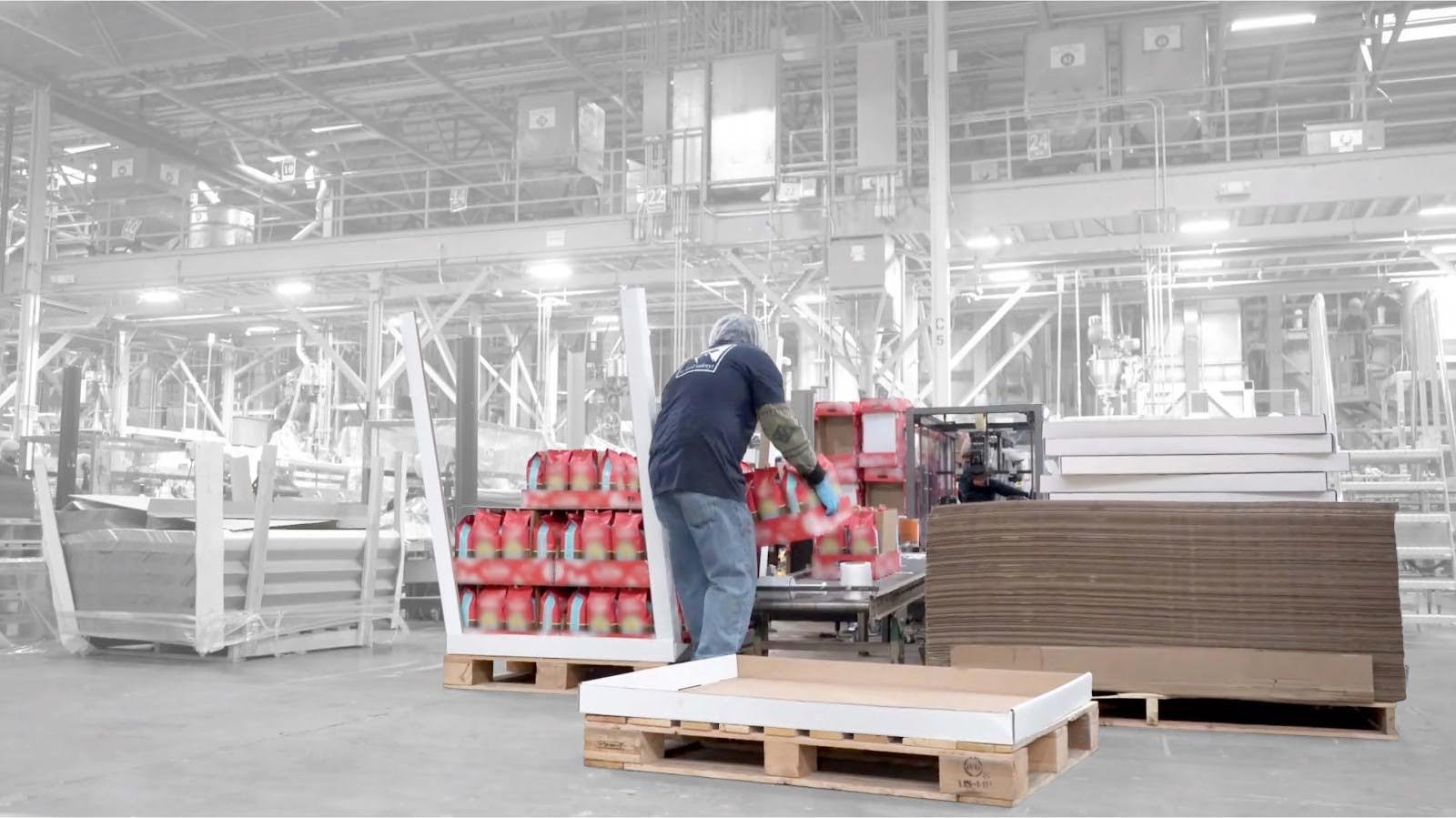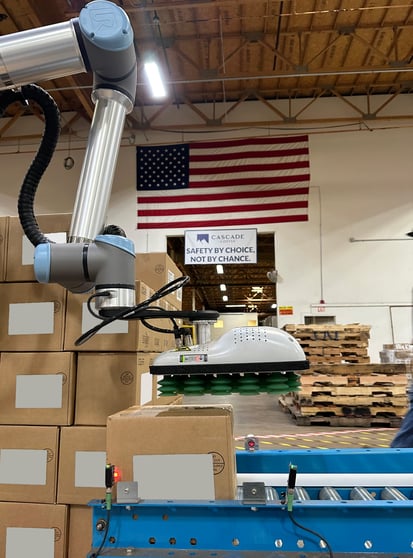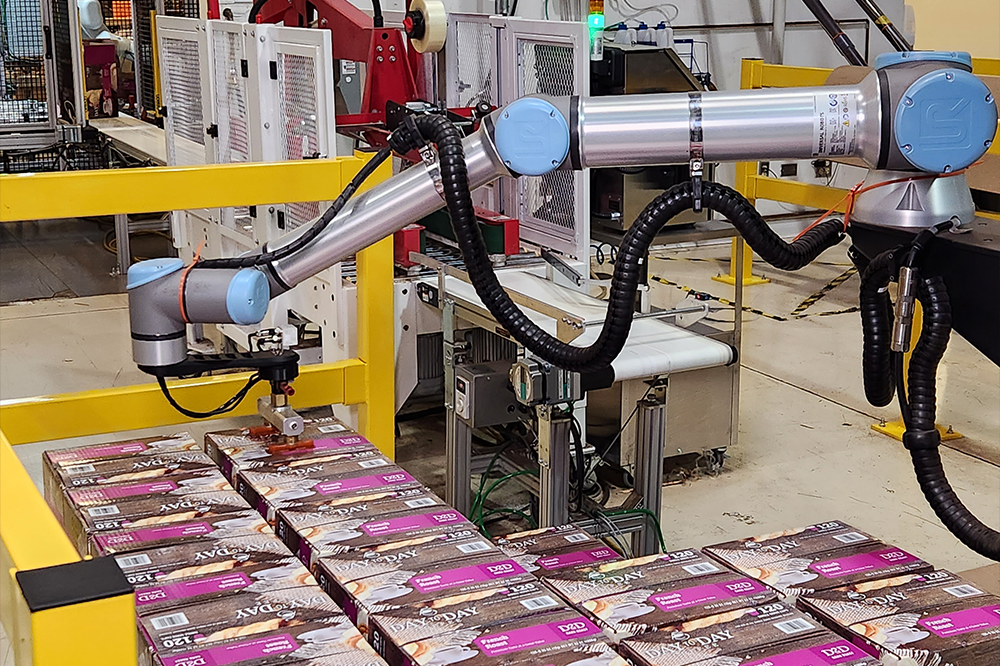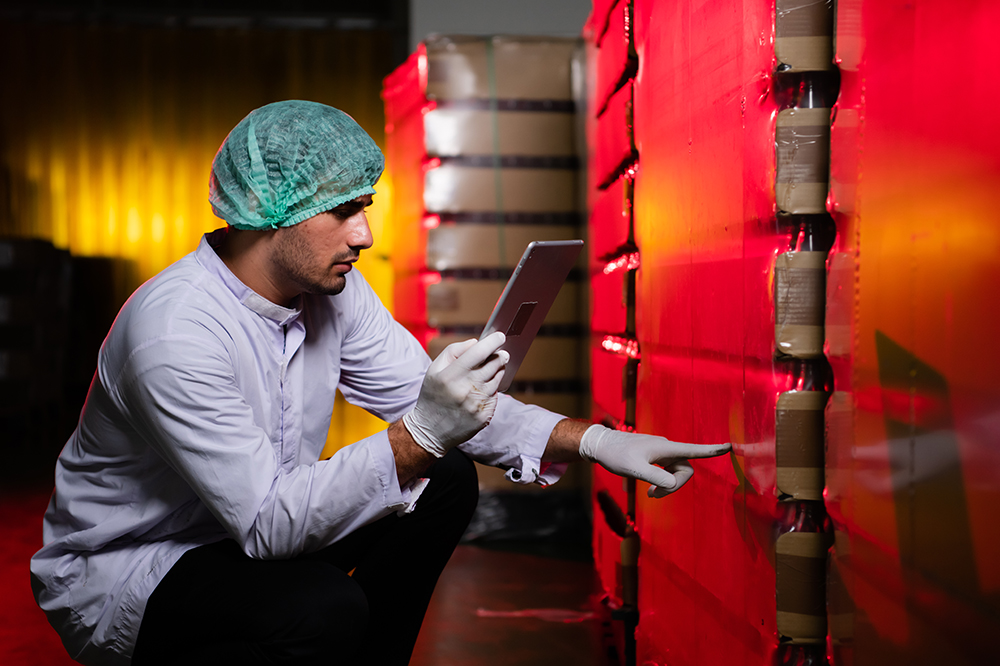
Safety is paramount in a factory. Everyone wants their team members to be healthy and available to perform their jobs. Injuries are the most undesirable outcome, typically falling into two categories: immediate and progressive.
Immediate injuries, such as a cut, burn, or broken bone, require prompt medical treatment. Manufacturing facilities have personal protective equipment (PPE) and safety protocols to prevent these injuries. Alternatively, progressive injuries build up over time and may be harder to mitigate. Some of these progressive injuries include hearing loss, respiratory issues, and musculoskeletal disorders (MSDs).
This blog article will discuss pallet stacking safety and how this manual task increases the risks of musculoskeletal disorders. We’ll introduce 5 important facts and focus on safety within three key industries: Food & Beverage, Pharmaceutical, and Consumer Goods Manufacturing.
Fact 1: The UK lost 149.3 million working days to MSDs in 2021 [1]
What are Musculoskeletal disorders (MSDs)?MSDs are a group of conditions that affect the muscles, tendons, ligaments, nerves, and other soft tissues of the body. Repetitive motions, awkward postures, prolonged static positions, overexertion, and forceful exertions can cause MSDs. |

How palletizing systems reduce MSDs in food & beverage tertiary packaging
Fact 2: The incidence rate for MSDs in the United States was 25.4 days per 10,000 full-time equivalent (FTE) workers in 2020 [2]
Working in food production poses hazards. While the industry has seen some successful automation, food and beverage production encompasses a remarkably diverse array of products that make it challenging to automate fully. Food and beverage manufacturing includes powders (sugar, flour, spices, baby food), liquids (soda, wine, cooking oils, dressings, sauces), dry products (cereals, nuts, coffee), and perishable products (fruits, vegetables, cheeses). Dense products (such as beverages and powders) can be cumbersome. Other products (such as liquids) may shift with movement, making it more dangerous for a person to lift above their head or move below their waist. When it comes to palletizing products, picking and placing require two key movements: back and shoulder flexion.
What is flexion movement?
|
Lower back pain increases when there is a longer duration of back flexion in mild (20° to 40°) and severe (>45°) positions (reported by the University of Buffalo) or extreme back flexion (>60° per Department of Kinesiology at the University of Waterloo). The manual palletizing of foods or liquids exposes people to both. Those who have experienced back pain know that recovery can take a long time.
Fact 3: Injured workers in the US needed a median of 14 days before returning to work [2]
However, introducing collaborative robot (cobot) systems in palletizing operations offers a promising solution. By assuming the physical and repetitive strain of placing products on pallets, cobots mitigate the risk of Musculoskeletal Disorders (MSDs) associated with palletizing tasks. For example, these cobots can execute long horizontal and tall vertical reaches that would be dangerous for a human worker.
While the food production industry tackles the inherent challenges of automating throughout the value stream, integrating cobots in palletizing operations represents a proactive step towards enhancing workplace safety and reducing the incidence of MSDs.

Pallet stacking safety in pharmaceutical production
Like food and beverage production, pharmaceutical manufacturing encompasses a wide range of products. It includes products such as:
- Solid medications: These include tablets, capsules, caplets, and pills, often in blister packs, bottles, or jars.
- Liquid medicals: Pharmaceutical liquids such as syrups, suspensions, solutions, and oral liquids are packaged in bottles, vials, ampoules, or sachets.
- Powders and granules: Powders and granules may be packaged in sachets, pouches, bottles, or jars and can include products like antibiotics, dietary and protein powders, or granules for oral administration.
- Injectables: Injectable medications, treatments, and vaccines come in vials, ampoules, or prefilled syringes. These require special packaging and handling due to their route of administration.
- Topical treatments: This category includes creams, ointments, gels, lotions, and patches. These are packaged in tubes, jars, or sachets.
- Disposable sterile products: Intravenous (IV) bags, needles, infusion solutions, masks, gloves, face shields, and surgical kits require specialized packaging to maintain sterility.
- Over-the-counter (OTC) medications: OTC medications can come in various forms but do not require a prescription. These include pain relievers, cough syrups, antacids, and allergy medications.
Given the diverse range of pharmaceutical products, packaging can vary significantly in size, shape, and weight. Some products are heavy which poses a risk to workers manually placing them on pallets.
Fact 4: 15-20% of lost working days in the UK were due to MSDs in 2021 [1]
Additionally, automated palletizing systems play a vital role in protecting the product being palletized. Given their often high value and delicate nature, minimizing product waste and damage is prioritized after worker safety. Automated palletizers ensure precise, consistent handling and palletization, thereby reducing the risk of accidental damage. By implementing automated palletizing systems, pharmaceutical manufacturers can not only enhance worker safety but also safeguard product quality and integrity, ultimately contributing to operational efficiency and regulatory compliance.
Reducing material handling risks in consumer goods manufacturing
In consumer goods manufacturing, the production environment is dynamic, with a wide range of products being processed and packaged. Consumer goods encompass various items, including:
- Household Products: cleaning supplies, filters, pots, pans
- Office Products: Printer ink, pens, pencils, paper, extension cords
- Electronics and Appliances: coffee makers, headphones, laptop batteries
- Personal Care Products: cosmetics, hair care, oral hygiene products
Manual palletizing in consumer goods manufacturing poses additional safety risks to workers. Products tower on pallets, requiring employees to place products both below and above waist level. This practice increases the likelihood of musculoskeletal injuries, particularly when dealing with heavy or bulky items. Lifting, climbing, pushing, pulling, and pivoting are the primary movements in manual material handling (MMH) activities, which create a risk of injury on the back and shoulder.
Fact 5: MSDs are responsible for about $50 billion in annual costs in the US [3]
Automated palletizing systems offer a solution to these challenges by reducing reliance on manual labor and minimizing the associated risk to people. By automating the palletizing process, these systems alleviate the physical strain on workers and create a safer working environment. They can handle a wide variety of consumer products efficiently and accurately, ensuring proper stacking and palletization without the risk of human error.

Conclusion
Providing people with a safe working environment is a top priority for food & beverage, pharmaceutical, and consumer product manufacturers. Injuries, whether immediate or progressive, pose significant risks to workers and can lead to substantial loss of working days and productivity. Musculoskeletal disorders (MSDs) are among the progressive injuries that can result from manual tasks like pallet stacking, particularly prevalent in the manufacturing of Food & Beverage, Pharmaceutical, and Consumer Goods.
Through the discussion of five crucial facts, it becomes evident that physical strain, including repetitive motions, awkward postures, and overexertion, significantly increases the risk of MSDs. However, the integration of automation (such as collaborative robot systems) offers a promising solution to mitigate these risks. Cobots can handle the physical strain of palletizing tasks, reducing the likelihood of MSDs, increasing pallet stacking safety, and enhancing overall workplace safety.
Overall, by embracing automation in palletizing operations, industries can create safer working environments, protect worker health, and improve operational efficiency, ultimately leading to greater productivity and success.
The future is safe
At Robotiq, we follow the principles of LEAN ROBOTICS to create a standardized solution that is easier to scale, repeatable, and easy to use. We make it easy to transition from manual palletizing to automated palletizing.

Implementation is easier than you think. Talk with one of our automation experts today to kickstart your project. (Your people will thank you).






